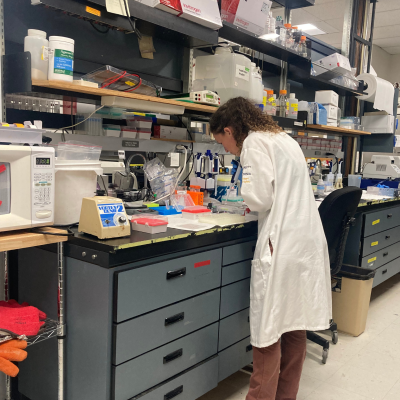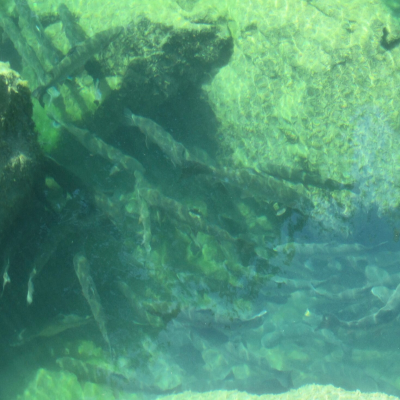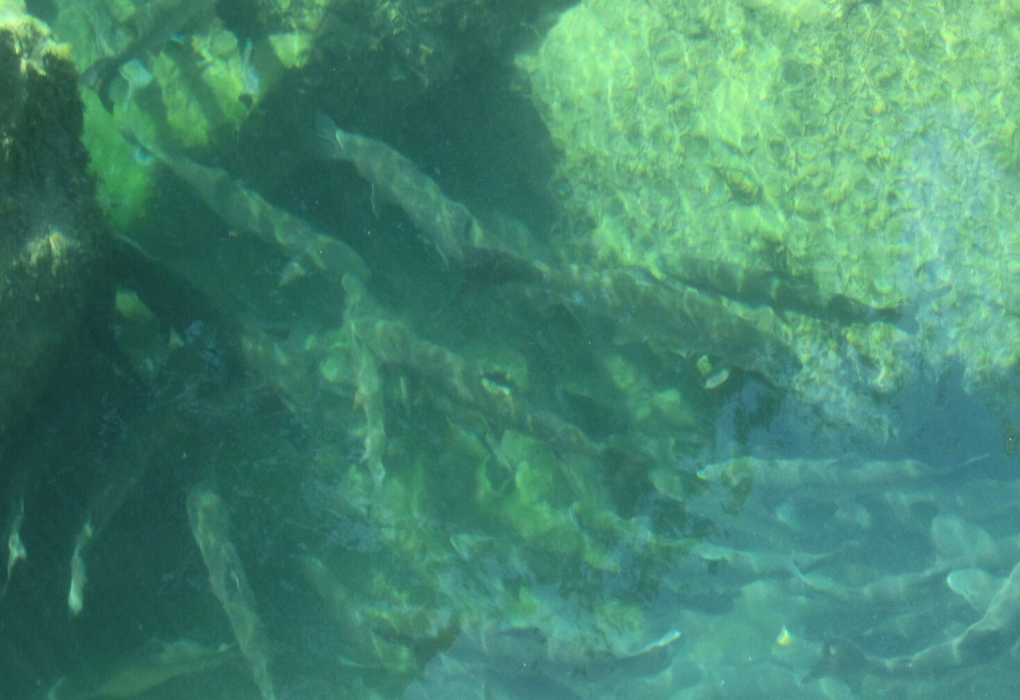StEELhead Discoveries Series - Part 15: January 2025
*This is Part 15 of an ongoing series on the campaign to Free the Eel and efforts to better understand and revive the iconic steelhead in the Pacific Northwest by Native Fish Society Fellow Samantha Kannry. View all parts of this series HERE. Additional parts and updates will be posted over the next several months. Stay tuned!
~ ~ ~ ~ ~ ~
"After Thanksgiving, we returned to the lab in Davis. We had finished up our field sampling in October, gathered the additional samples helpfully collected for us by the Yurok Tribe, BLM, and ODFW, and were ready (as ready as we ever are) to turn the samples into sequence-able DNA. After the many months, we spent last winter trial-and-erroring our way through the lab protocols, we were primed for success this year. We had figured a few things out, one of the keys being to begin all steps with fresh reagents. In doing so, and using the knowledge we had gained last year, we had a brief and effective time conducting the molecular portion of our project. We have already gotten our data back from this year’s efforts and are now in the process of analyzing it and adding it to our growing body of information on regional steelhead and Coastal Cutthroat.
Our results from the past few years have shown us where summer-run genetics exist, notably above dams on the Rogue, Klamath, Trinity, Mad, and Eel Rivers, and around barriers with known extant populations of summer-run. They have also shown us where we can find traces of summer-run genetics, even with just a few individuals observed on some years (such as the North Fork of the Eel River), and where we cannot find any genetic trace, even when 10-20, some years more than 30, large O. mykiss are seen every summer (the Mattole River).
What these results mean for the future conservation efforts of summer-run and what is happening in rivers where we do not find any genetic evidence, is still being considered. We know that steelhead are a highly adaptable species, with a spectrum of life-history traits that we too often attempt to put into simple categories. We also know that the summer-run genotype is necessary to have a summer-run population. And the genotype is not maintained once summer-run populations are gone. We cannot expect summer-run to re-evolve from winter-run populations, so we need to protect summer-run populations. We do, however, see above barrier (or dam) resident-trout populations maintaining summer-run genetics. In a future scenario where more dams come down, there are reservoirs of summer-run genetics waiting to make their way back to the sea.
As the Eel River dams continue through the FERC decommissioning process, questions are arising regarding how best to re-establish anadromous fish runs post-dam removal. What we do not want to see is preemptive and presumptuous human intervention. No hatchery or trap and haul can do it better than the fish can on their own. Open access to the historic habitat and allow anadromous fish time to get to know the place again. Remove the barrier and let the migratorily inclined resident trout take their isolated genetics to the ocean. The life-history, run-timing, and overall genetic diversity is still there, waiting to be set free."
-Samantha Kannry



Photo Credit: Samantha Kannry and team
~~~~~
About the Author:
Samantha Kannry has been monitoring, studying, and swimming with summer-run steelhead in the Eel River and other rivers of Northwestern California for the past thirteen years. She joined NFS as a volunteer in 2015, then became a fish genetics fellow in 2020.
While it has been clear to the native peoples of the region since time immemorial that summer-run steelhead and the congeneric spring Chinook are separate populations, not everyone else sees it so clearly. Her research has focused on using conservation genetic tools to elucidate the distinction between summer and winter-run steelhead.
When not minking (a combination of hiking, swimming, snorkeling, sliding, shimmying, and boulder jumping) down rivers, she is usually growing and eating fruit, moving manure at Caudal Fin Farm, or bike touring distances large and small. All working towards re-establishing the inherent continuity between rivers, land, and people.
Read StEELhead Discoveries Part 1 - 14 HERE.
